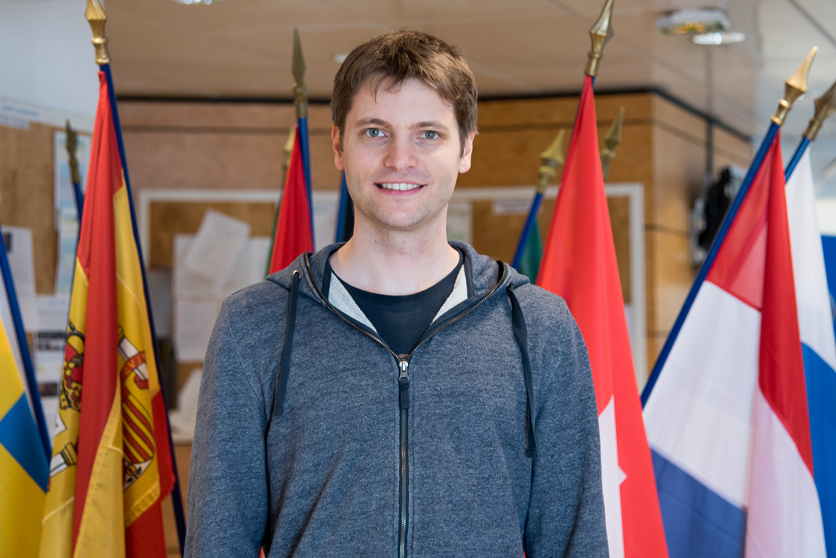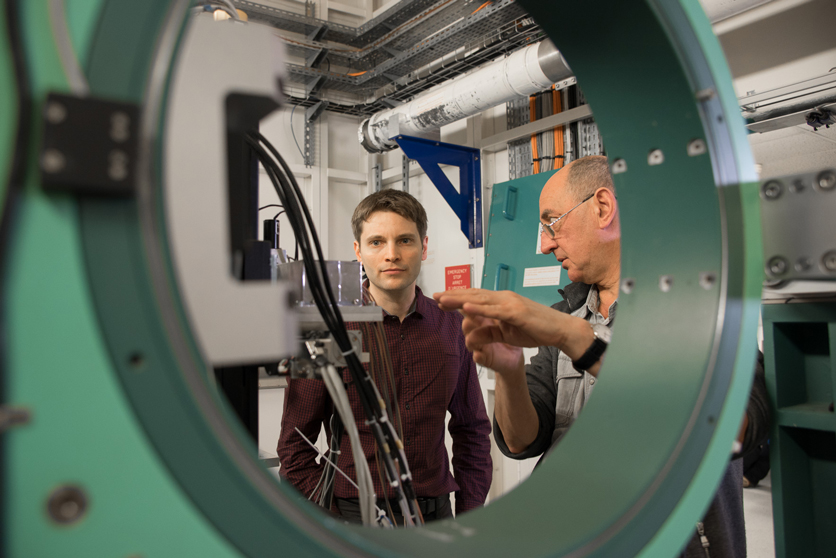- Home
- News
- General News
- Kilian Peter Heeg...
Kilian Peter Heeg wins ESRF Young Scientist award
06-02-2018
Kilian Peter Heeg has been awarded the title of Young Scientist 2018 by the ESRF User Organisation in recognition of his pioneering work on light-matter interactions enabling resonant brilliance enhancement of X-ray pulses. This award is presented every year at the ESRF annual User Meeting to a scientist aged 37 or younger for outstanding work conducted at the ESRF.
Share
Kilian Heeg is a physicist and postdoctoral researcher at the Max Planck Institute for Nuclear Physics in Heidelberg, Germany. Aged just 31, Kilian has already significantly shaped the field of X-ray quantum optics.
Kilian says: “I wanted to be a mathematician when I was a child and I was always fascinated by natural sciences. However in my final years in school I fell in love with physics and very quickly became fascinated with quantum mechanics and especially quantum optics. I feel very honoured and pleased to have been chosen as the winner of this year’s ESRF Young Scientist Award.”
Quantum optics is concerned with the phenomena of light and its interaction with matter, where the quantum mechanical character becomes crucial. Kilian’s work focusses on X-rays and calls on synchrotron radiation sources to excite nuclear resonances in matter. These nuclei can absorb the X-rays and then release them some time later. Part of his work has involved demonstrating slow light, this means to slow down X-ray pulses in matter by several orders of magnitude using quantum optical effects. The phenomenon of slowing down light is a concept that has been known in the visible domain for some years, however it still very novel in the X-ray domain. The experiments fall into the domain of fundamental research and could serve in the future to develop optical circuits that no longer require electronic components.
|
Kilian has been a regular user of the ESRF’s ID18 Nuclear Resonance Scattering beamline since 2013. "Kilian Heeg is a rising name in the field of nuclear resonance scattering and despite his young age, he has several papers to his name, each of them averaging around 20 citations, which is a great marker. We are always happy to see him come back to ID18 to conduct experiments and bring new ideas", says Alexander Chumakov, Scientist on ESRF's ID18 beamline.”
|
Kilian with Alexander Chumakov on ID18. ©ESRF/C. Argoud |
In 2017, Kilian published ground-breaking work on light-matter interactions in the journal Science. The control of interactions between light and matter is a key requirement of essentially all modern applications in the optical sciences. Kilian introduced and experimentally demonstrated an entirely new method to control the interaction of light and matter for use in X-ray quantum optics. It is based on precisely controlled motion of a resonant target and enables to tailor the X-ray spectrum. This way, desired components of the light can even be amplified, such that, for example, nuclear resonances can be excited more efficiently. This method and the resulting enhancement of the resonant brilliance of X-ray pulses opens new paths in X-ray science.
|
Watch the video to hear Kilian Heeg speak about his work during a trip to the ESRF. |
Kilian remembers the moment he knew he’d found something substantial. “After a two-year preparation period and two previous beamtimes, I’d come to the ESRF to carry out measurements. We started the calibration and it usually takes about three hours to get a good parameter set. But that day, I don’t know what happened, we found the ideal parameters from the very start. We immediately got the best result before even calibrating. It was one of those famous ‘Eureka moments’ because I knew exactly what I hoped to see and all of a sudden it was there, instantly recognizable as a great result.”
In 2017 Kilian was awarded the IBAME (International Board on the Applications of the Mössbauer Effect) young scientist award in recognition of his excellent contributions and ground-breaking results in the emerging field of nuclear quantum optics.
He also developed the widely accepted standard theory for quantum optics with nuclei in thin film cavities as well as a method to observe so-called spontaneously generated coherences at X-ray energies. Kilian developed the theoretical concepts for this method as well as driving the experimental verifications at synchrotron radiation facilities, including the ESRF.
“One of my aims in the future is to observe X-ray induced quantum dynamics in nuclear samples, which goes beyond linear scattering theory. This requires very high intensities but also excellent coherence properties like those that will be found in future synchrotrons, for example ESRF-EBS”, says Kilian. “The team effort in my work is very important. I’m a theoretical physicist, so I don’t have any samples myself. I need to rely on the expertise of other people at the beamline and, of course, to operate a 5-6 day experiment involves a lot of people, too. The challenge is knowing how to mount and prepare the experiment and those skills belong to the experimental physicists to whom I’m extremely grateful," he adds.
 |
|
Kilian Heeg prior to the Young Scientist Award talk at the 2018 ESRF User Meeting. ©ESRF/C. Argoud |
Top image: Kilian on ESRF's ID18 beamline ©ESRF/C. Argoud




